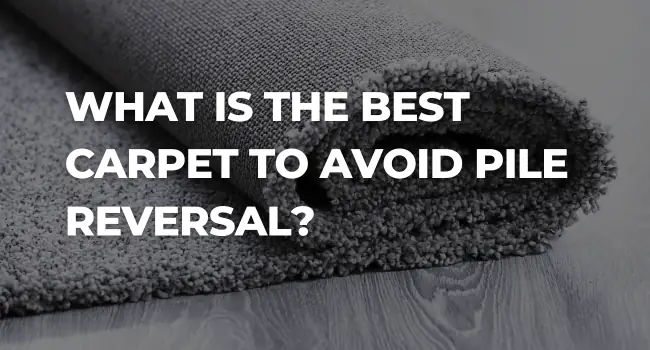Last updated on May 26th, 2024 at 06:29 am
When it comes to renovating your space, one of the crucial steps often overlooked is cleaning the subfloor after removing carpet. Neglecting this essential task can lead to a host of problems, from poor air quality to issues with your new flooring. In this comprehensive guide, we’ll walk you through the ins and outs of subfloor cleaning after carpet removal, ensuring that your next home improvement project starts on the right foot.
The Basics: Cleaning Your Subfloor
The process of cleaning a subfloor after carpet removal can be broken down into a few basic steps. Each of these steps plays a vital role in ensuring that your subfloor is clean and prepped for new flooring.
Step 1: Gather Your Tools and Materials
Before you begin, it’s essential to have the right tools and materials at your disposal. Here’s a list of items you’ll need:
- Utility Knife: You’ll use this to cut and remove any remaining carpet or padding.
- Pry Bar: For removing tack strips and any stubborn staples or nails.
- Screwdriver: To tighten any loose screws in the subfloor.
- Broom and Dustpan: For initial debris removal.
- Vacuum Cleaner: A powerful vacuum with a HEPA filter to capture fine dust.
- Safety Gear: Gloves, a dust mask, and safety goggles for protection.
- Cleaning Solutions: Depending on the type of subfloor, you may need water, mild detergent, or specialized cleaning products.
Step 2: Clear the Subfloor
Start by removing any remaining carpet, padding, and adhesive residue. Use the utility knife and pry bar for this. Once you’ve removed all the debris, sweep the subfloor thoroughly, and then vacuum it to ensure it’s as clean as possible.
Step 3: Scrub and Clean
Now, it’s time to clean the subfloor surface. Depending on the material, use an appropriate cleaning solution. For wood subfloors, a mixture of water and mild detergent usually does the trick. For concrete subfloors, there are specific concrete cleaning products available.
Step 4: Remove Adhesive Residue
Adhesive residue can be particularly stubborn. There are two common methods for dealing with it:
- Scraping: Use a putty knife to gently scrape away the residue. Be careful not to damage the subfloor in the process.
- Solvent: Apply a specialized adhesive solvent and follow the manufacturer’s instructions for safe and effective removal.
Step 5: Address Stains
If your subfloor has stains or discolorations, sanding may be an option. However, we’ll cover that in more detail later in this guide. For now, focus on general cleaning.
—
The Importance of Subfloor Cleaning
You might be wondering, “Is cleaning the subfloor really necessary?” The answer is a resounding yes! Neglecting this crucial step can lead to a variety of issues, including:
- Poor Air Quality: A dirty subfloor can harbor dust, allergens, and odors, affecting the air quality in your home. Cleaning it ensures a healthier living environment.
- Adhesion Problems: Any leftover adhesive or debris can interfere with the adhesion of your new flooring, potentially leading to an uneven or unstable installation.
- Mold and Mildew Growth: Moisture can become trapped beneath your new flooring if the subfloor is not properly cleaned. This can create an ideal environment for mold and mildew growth.
- Stains and Discoloration: Stains on the subfloor can show through your new flooring, marring the overall appearance of your room.
- Decreased Longevity: Without proper cleaning, the lifespan of your new flooring may be compromised.
—
Removing Carpet Adhesive Residue
One of the most common challenges in subfloor cleaning is dealing with carpet adhesive residue. There are a few effective methods and products to consider:
- Adhesive Removers: These specialized products are designed to break down and dissolve adhesive residue. Be sure to follow the manufacturer’s instructions and take proper safety precautions.
- Heat Gun: Applying heat to the adhesive can soften it, making it easier to scrape away. Use caution to avoid damaging the subfloor or releasing toxic fumes.
- Solvents: As mentioned earlier, adhesive solvents can be highly effective. Just be sure to choose one that is appropriate for your specific adhesive type.
Sanding the Subfloor
Sanding the subfloor is an option if you’re dealing with stubborn stains, uneven surfaces, or adhesive that won’t budge. However, this is not recommended for all subfloor materials, and it should be done with care:
- Select the Right Sandpaper: Choose sandpaper with the appropriate grit for the job. Coarse grit for adhesive removal, finer grit for finishing.
- Safety First: Wear a dust mask, safety goggles, and hearing protection. Sanding can produce fine dust and noise.
- Smooth and Even: Sand the subfloor evenly to avoid creating low or high spots. This will ensure your new flooring goes down smoothly.
- Vacuum and Clean: After sanding, vacuum the subfloor thoroughly to remove all dust, and then clean it with the appropriate cleaning solution.
Eco-Friendly Cleaning Options
For those environmentally conscious individuals, there are eco-friendly cleaning methods and products available. These options help you clean your subfloor without harming the planet. Here are a few suggestions:
- Vinegar and Water: A mixture of vinegar and water is effective for cleaning many subfloor types. It’s safe, non-toxic, and environmentally friendly.
- Baking Soda: Baking soda is a natural abrasive that can help remove stains and odors. It’s safe for the environment and your health.
- Biodegradable Cleaners: Look for cleaning products that are labeled as biodegradable and eco-friendly. These products are designed to break down harmlessly in the environment.
Dealing with Odors
If your subfloor has an unpleasant odor, it’s essential to address it before installing new flooring. Here are some tips to help you get rid of that persistent smell:
- Ventilation: Open windows and doors to allow fresh air to circulate, helping to dissipate odors.
- Baking Soda: Sprinkle baking soda generously over the subfloor and leave it for a few hours or overnight. Then, vacuum it up.
- Charcoal: Placing activated charcoal around the room can absorb odors.
- Pet Enzyme Cleaners: If pet odors are the issue, enzyme-based cleaners can effectively eliminate the smell.
Repairing Subfloor Damage
Before cleaning, assess your subfloor for any damage, such as rot, water damage, or structural issues. It’s crucial to address these problems before proceeding with cleaning. If you discover significant damage, it might be necessary to replace a section or the entire subfloor.
Smoothing the Subfloor
If your subfloor is uneven, you’ll want to level it before installing new flooring. Depending on the type of subfloor material, this may involve using leveling compound, self-leveling underlayment, or another suitable method. It’s essential to have a smooth and level surface to ensure the longevity of your new flooring.
Concrete Subfloors
Cleaning a concrete subfloor can be a bit different from cleaning wood or other materials. Concrete can be porous and may require specialized products to ensure it’s free from contaminants. Always consult the manufacturer’s recommendations for the best cleaning products for concrete subfloors.
—
Safety Precautions
Subfloor cleaning can involve the use of chemicals, sharp tools, and dust-producing activities. Safety should be a top priority. Here are some essential precautions to take:
- Wear Protective Gear: Safety goggles, gloves, a dust mask, and even ear protection if you’re using power tools.
- Ventilation: Ensure proper ventilation when using chemicals or creating dust.
- Follow Manufacturer Instructions: Always adhere to the instructions on cleaning products, solvents, and tools to ensure safe use.
- Secure Loose Clothing: Avoid wearing loose clothing that could get caught in tools or equipment.
- Work Methodically: Take your time and work methodically to avoid accidents and injuries.
Time Required
The time it takes to clean a subfloor after removing carpet can vary significantly based on the size of the room, the subfloor condition, and the cleaning methods employed. On average, you can expect this process to take anywhere from one to three days.
DIY or Professional Cleaning
Deciding whether to tackle subfloor cleaning as a DIY project or hire a professional depends on your experience, the condition of your subfloor, and your comfort level with the necessary tasks. DIY cleaning can save you money, but professional services may be needed for particularly challenging jobs or for those with limited time or experience.
Preventing Future Issues
Once your subfloor is clean and prepped for new flooring, it’s essential to take preventive measures to ensure its longevity:
- Moisture Control: Install a moisture barrier if necessary to prevent moisture from seeping into your subfloor.
- Proper Installation: When installing new flooring, ensure it’s done correctly to prevent future problems.
- Regular Maintenance: Regularly inspect your subfloor for signs of damage, and address any issues promptly.
Common Mistakes to Avoid
In the process of subfloor cleaning, several common mistakes can hinder your progress. Here are some pitfalls to steer clear of:
- Rushing the Process: Take your time to ensure that the subfloor is thoroughly cleaned and prepped.
- Skipping Safety Gear: Neglecting safety gear can result in injuries or health issues.
- Using the Wrong Products: Ensure you’re using the right cleaning products for your specific subfloor material.
- Ignoring Damage: If your subfloor is damaged, addressing it is essential before proceeding with cleaning.
Different Flooring Types
The type of flooring you plan to install will influence the subfloor cleaning process. For hardwood, tile, vinyl, or other materials, there may be slight variations in the cleaning methods to ensure the best results.
Subfloor Cleaning vs. Replacement
Finally, it’s important to recognize that in some cases, subfloor cleaning may not be enough. If your subfloor is severely damaged or compromised, a full replacement may be the better option. Consult with a professional to determine which approach is best for your specific situation.
For further information and expert advice on subfloor cleaning and maintenance, consider visiting authoritative sources like the National Wood Flooring Association.
In conclusion, cleaning your subfloor after removing carpet is a crucial step in any renovation project. It ensures a healthy living environment, the longevity of your new flooring, and a successful installation. By following the steps and precautions outlined in this guide, you’ll be well on your way to a clean and sound subfloor, ready for your next flooring adventure.
Table: Expert Data on Subfloor Cleaning
| Step | Description |
|---|---|
| Gather Your Tools and Materials | A list of essential tools and materials for subfloor cleaning. |
| The Importance of Subfloor Cleaning | The significance of subfloor cleaning for air quality, adhesion, and longevity. |
| Removing Carpet Adhesive Residue | Methods and products to effectively remove adhesive residue. |
| Sanding the Subfloor | Tips and safety precautions for sanding the subfloor. |
| Eco-Friendly Cleaning Options | Environmentally friendly cleaning methods and products. |
| Dealing with Odors | Strategies for eliminating odors from the subfloor. |
| Repairing Subfloor Damage | The importance of assessing and repairing damage before cleaning. |
| Smoothing the Subfloor | Methods for achieving a smooth and level subfloor. |
| Concrete Subfloors | Specific considerations for cleaning concrete subfloors. |
| Safety Precautions | Essential safety measures when cleaning the subfloor. |
| Time Required | An estimate of the time needed for subfloor cleaning. |
| DIY or Professional Cleaning | Pros and cons of DIY vs. professional subfloor cleaning. |
| Preventing Future Issues | Measures to prevent future subfloor problems. |
| Common Mistakes to Avoid | Common errors to steer clear of during subfloor cleaning. |
| Different Flooring Types | Variations in subfloor cleaning based on flooring type. |
| Subfloor Cleaning vs. Replacement | When to choose cleaning or replacement for the subfloor. |


